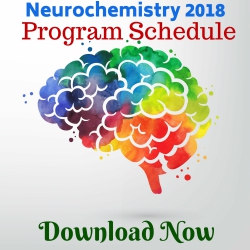
Mourad Tayebi
Western Sydney University, Australia
Title: Proteinopathies: A tale of human, dogs and kangaroos
Biography
Biography: Mourad Tayebi
Abstract
Proteinopathies such as Alzheimer’s disease (AD) and Parkinson’s disease (PD) are a group of disorders thought to be caused by abnormal folding or misfolding of beta amyloid (Ab) and alpha-synuclein respectively. Their pathogenesis is not well understood due to unresolved molecular mechanisms. This is further complicated by the lack of proper natural disease models that might be effective in aiding in the investigation of the molecular mechanisms underlying these disorders. Dogs spontaneously deposit human-type Ab as they age and thus are a natural higher mammalian model of aging. The canine Aβ precursor protein (APP) is virtually identical to human APP. Previous studies demonstrated that aging dogs spontaneously accumulate human-type Aβ and parallel declines in cognition. Further, the outcomes of immunotherapy studies in aged dogs has predicted human clinical trial outcomes; clearance of Aβ plaques with little cognitive benefits. In more recent work, we show that canine-derived Aβ was toxic to human neuronal cell lines and led to aggregation of human Aβ. Eastern Grey Kangaroos (EGK) display a typical movement disorder presentation associated with grass phalaris poisoning. We show that this disorder, known as Phalaris Staggers displays a Parkinsonian type syndrome with associated Parkinson’s-like signs and neuropathology, including synucleiopathy and neuromyelopathy. Studies of proteinopathies have typically used transgenic mouse models, and subsequently translated to human clinical trials. However, the success rate of these translational studies have been limited and unfortunately resulted in negative outcomes and some with adverse events. It is critical to identify and validate natural higher mammalian models of proteinopathies to investigate the molecular mechanisms underlying these disorders and test therapeutic outcomes prior to translation to human clinical trials.

